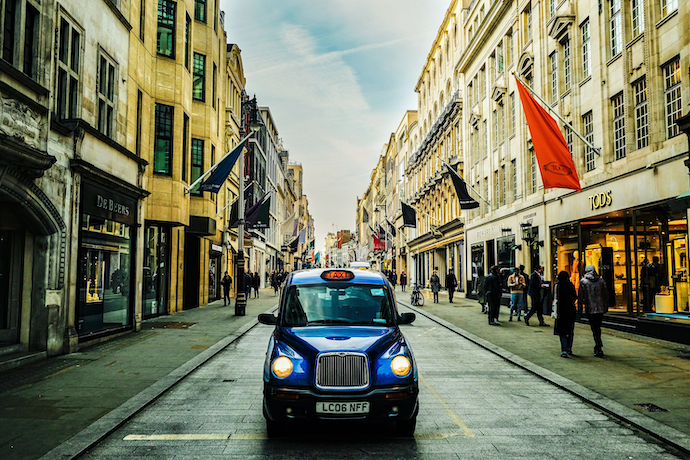In 2023, the British business landscape faced formidable challenges. It was a year marked by sluggish growth and soaring inflation, culminating in the downfall of the erstwhile High Street titan, Wilkos. National mainstays such as John Lewis, Waitrose, and Thames Water didn’t escape unscathed either, each emerging from the year with significant bruises. Now, as they step into the new year, these institutions are armed with ambitious plans aimed at revitalizing their fortunes.
Britain’s productivity, consistently trailing behind its global counterparts, underscores the urgency for comprehensive strategies to rejuvenate these faltering enterprises. This brings us to a critical examination of the essential components for a successful business resurgence. Three pillars are deemed fundamental for any effective transformation: a recalibration of business operations, a cultural shift, and a metamorphosis in public perception. Let’s delve into these prerequisites, exploring their intricacies and examining case studies of those who have navigated these waters with notable success.
The first port of call for any business restructuring needs to be a reconsideration of the wider business model. In the fear of stating the obvious, the reason for the failure of companies from across virtually all sectors is a lack of sales. With a general squeeze being felt by businesses and individuals alike, there is a greater need now than ever before to ensure that your business model is as customer-centric and commercially focused as possible.

Nicola Foulston, who has built a career turning around the fortunes of companies from across the motor racing to legal industries, describes the role of a CEO as above all “an economist.” Her theory is that “when businesses fail, it’s often because there is far too little concentration on cash by its senior management. Cash is king: it’s true for every single business.” In-depth analysis of some of the UK’s highest profile turnarounds in recent years, including Aston Martin and Tescos, reveal a blueprint for a successful revival. In both of these cases, the impetus was placed on a drastic reduction of costs to remove debt and an overhaul of the existing pricing structure.
Alongside a strategic shift in business operations, a pivotal element for a successful turnaround is a fundamental transformation in company culture. To rejuvenate a business, leaders must be ruthless in addressing underperformance and hiring talented and forward-thinking individuals to inject new vitality into the organisation. Take Rolls Royce for example. The company cut thousands of jobs last October after Tufan Erginbilgiç, Rolls Royce’s new CEO, described the company as a “burning platform.”
This complete restructuring not only of operations but also mentality has already garnered impressive results in a short stretch of time, with the car manufacturer being described as the FTSE100’s ‘star performer’ of 2023 by The Times. Changing the company culture is not merely about reducing personnel as Erginbilgiç is also committed to creating an environment where employees are motivated, innovative, and aligned with the company’s new direction.
This cultural metamorphosis becomes a linchpin for success, setting the tone for effective collaboration and a shared commitment to achieving common goals, ultimately contributing to a sustained business revival.
In the context of business revitalization, strategically adjusting the corporate image is a pivotal factor for success. A dated or compromised corporate image can undermine customer trust, dampen investor confidence, and impact employee morale. Marks & Spencer suffered from this very problem over the past decade, with public perception of its fashion arm as being marketed for an older audience harming its reputation and thus sales among wider demographics. A revamp of its marketing approach and shift towards selling more ‘trendy’ third-party brands has engendered a complete reversal in fortunes however, as Marks & Spencer returned to the FTSE100 and recorded a large leap in profits in 2023.
This strategic shift in image not only cultivates positive perceptions but also aligns the organisation with evolving industry trends and shifting consumer expectations. Marks & Spencer’s campaign in particular resonated with customers, attracted new audiences, and repositioned the company as dynamic and forward-thinking. In the context of a business turnaround, a recalibrated company image is integral to rebuilding credibility and instilling renewed confidence in the brand’s endurance and relevance.
The challenges faced by British businesses in 2023 have therefore underscored the imperative for comprehensive, fully measured strategies to revitalise struggling companies. Examining successful turnarounds reveals a consistent triad of essential elements: a strategic shift in business operations, a fundamental transformation in company culture, and a recalibration of corporate image. Ultimately, this holistic approach, encompassing operational, cultural, and image considerations, can be seen as an essential roadmap for navigating the pitfalls for any turnaround.
If you’re interested in writing for International Policy Digest – please send us an email via submissions@intpolicydigest.org
This post was originally published on this site be sure to check out more of their content







